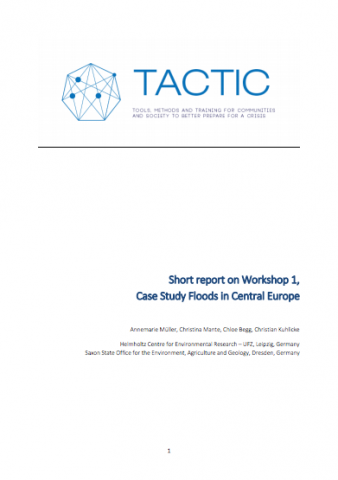Case Study Floods in Central Europe

This case study focuses on the cross-border situation between Germany, Poland and the Czech Republic, with particular attention given to the Oder/Odra, Lusatian Neisse, Elbe/Labe, and Mulde Rivers and their smaller tributaries by concentrating on the border triangle of Germany (Free State of Saxony), Poland (Województwo Dolnośląskie / Lower Silesian Voivodeship), and the Czech Republic (Liberecký Kraj). These areas were affected by a series of large-scale as well as some smaller flood events in 1997, 2002, 2006, 2010 and 2013.
TACTIC aims to understand the role of risk communication before, during and after an event on community preparedness with a special focus on assessing and evaluating existing risk communication activities; in particular their suitability and usefulness with regard to disaster risk preparedness. While flood risk is managed on various levels (EU, national, regional, local), risk communication with the general public mainly takes place on the regional and local level. This is, therefore, the spatial/organizational focus of our case study.
© TACTIC Consortium, March, 2015.
